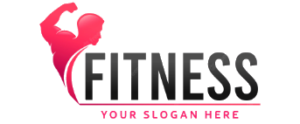
Curious to find out if rowing is a good workout? In short, absolutely — so if you haven't already, it's about time you got to know the indoor rower, aka the ergometer or rowing machine.
While it can look intimidating at first, rowing is actually more beginner-friendly than you might think — and it provides one hell of a workout. Whether you're getting to know the lay of the land in your local gym or you're considering a new piece of equipment for your home, here are all the deets on what's sure to be your new favorite fitness machine.
What Is a Rowing Machine?
A rower is a machine that essentially mimics the rowing of a shell (aka boat), like those you see in the Olympics, according to Evan Tyrrell, owner of F45 Training in La Jolla, California. Sounds simple enough, but step on a rower and you’ll quickly realize that the workout is intense.
“The rowing machine is like the Swiss Army knife of the gym. Its multiple purposes include low-impact workouts, high-intensity sprint intervals, low-intensity endurance development, full-body strength training, core training, heart health, and posture control,” explains professional rower Michelle Sosa, ACE-certified personal trainer and Hydrow athlete. Swiss Army knife is right — the rower seemingly does it all.
How Do You Use a Rowing Machine?
The motion you use when rowing is not always intuitive, but it's actually pretty simple once you dial it in. Here's a handy way to remember how to row: legs, core, arms (on the way out) and arms, core, legs (on the way in). Meaning, when you start from the bottom of a stroke, you should extend your legs, hinge your core, then use your arms to row the handle toward your chest. Then reverse it to go back to the starting position: Extend your arms, let your core hinge forward, then bend your legs. (It might help to repeat it in your head as a sort of mantra while you're rowing: "Legs, core, arms, arms, core, legs.")
The biggest misconception about rowing is that it's an upper-body-only exercise, according to Sosa. "The bulk of your rowing stroke is accomplished by the legs and core," she says. A lot of the power actually comes from the legs, but you need to keep your core tight while you push back and eventually pull the handles with your hands/arms.
“Rowing is about 60 percent legs, 30 percent core, and 10 percent arms. Most of rowing will be working out your hamstrings and booty, but only if you are hinging properly. It should feel like a deadlift,” says Joseph Ilustrisimo, an ACSM-certified personal trainer. “There’s also a large amount of core activation — your core should be engaged the whole time, so you should learn how to dynamically engage those abs and you should feel a burn throughout,” he adds.
You can ask a trainer at your gym to show you the proper form, or opt for an at-home program with instructional videos. Hyrdow is like the Peloton of rowing machines, so if you’re in the market for a home gym addition, this would be a useful way to get some live instruction on how to use a rower. “The instruction piece is critical for beginners to ensure you’re maximizing your efforts and doing it safely and correctly,” says Sosa.
If you want to try a class that incorporates rowing, you can try CityRow in New York City, F45 Training worldwide, and Orangetheory Fitness (at certain locations). These studios all offer workouts that incorporate the rowing machine into their classes, which would give you more IRL intel on how to properly use the rowing machine and how to vary your workouts to keep things interesting.
What Are the Benefits of Using a Rowing Machine?
What can you get out of a rowing machine workout, and why would you want to hop on one at your gym? Here's exactly what makes rowing a good workout, and some of the benefits you can expect.
- Improve your aerobic fitness. Rowing for even just 15 minutes is “a serious aerobic workout,” says Tyrrell. Rowing regularly can help increase your stamina and endurance while improving your overall cardiovascular health.
- Get a full-body workout. Get this — a rowing machine uses 86 percent (!!) of the muscles in your body, according to a study from the English Institute of Sport. (Just smile a lot during your workout and you might use 100?)
- Improve lower-body conditioning. Because you use your leg muscles so much in this workout, targeted lower-body conditioning — building strength and endurance — is among the top benefits, says Tyrrell. Stronger stems, here you come.
- Work out with less injury risk. You have a lower injury risk on a rower machine because it’s low-impact, says Tyrrell. Plus, because of this, you can work at a high intensity without as much wear and tear on your joints. “Higher-intensity exercises like plyometrics and sprinting can sometimes be hard on the body, but low-impact tools like rowing machines and bicycles are great for the body,” says Ilustrisimo. “You also have many variables to change in your workouts, like resistance, pace, and distance,” he adds.
- Build better posture. “Since the rowing machine primarily uses your legs, core, and back, it has loads of postural benefits, and is a great tool to engage the posterior chain [backside] of the body,” says Ilustrisimo. Working your posterior chain is super important for balancing your muscle strength, reducing injury risk, and helping correct the bad posture that’s common in this sedentary society.
- Keep your workout beginner-friendly. One of the additional benefits is that it’s easy for beginners to try, says Sosa. “You see and feel results quickly, which is great for beginners,” she says. But you have to stick with it for more than just a few minutes to make this happen. “Gym-goers tend to hop on and off a rower within five minutes due to boredom or confusion, foregoing those results,” she explains. Stick it out for 10 to 20 minutes to see an improvement in your form and to get your heart pumping.
Is Rowing Better Than Other Cardio Machines?
So, is the rowing machine the queen of the gym? That depends. “No one machine is better than the other in every situation, but the rower is safe for those who are otherwise unable to run or cycle because of joint pain. As long as you maintain strong form, the rowing machine is a great full-body workout that can improve both strength endurance and cardiovascular endurance,” says Liz Letchford, Ph.D.(c), a certified athletic trainer and injury-prevention specialist in Los Angeles.
Unlike other cardio options, the rowing machine has the edge of simultaneously being a strength and cardio workout, notes Tyrrell. "The rower lets you build more muscle by raising the resistance level, whereas treadmills, spinning bikes, and elliptical machines offer limited muscle-building benefits," he says.
So, you're getting the cardio workout, but you're also doing moves similar to what you'd do with big, heavy weights. "Rowing has very similar movement patterns to deadlifts, seated rows, leg presses, and even calf raises from when you push away from the platform," says Tyrrell.
Can You Use the Rowing Machine If You're Injured or New to Exercise?
The rowing machine is generally quite safe for those who are rehabbing an injury or newer to working out. "Rowing is something I recommend to people of all ages with all different fitness abilities, as you can really make it your own and use it as a means for achieving a number of different fitness goals," says Sosa. Here's the deal:
If You Have an Extremity Injury…
"Because rowing has virtually zero impact, it's a fantastic option for anyone who is rehabbing an injury, typically experiences joint pain or discomfort, or is looking to build strength without excessive strain," says Sosa.
For that reason, a lot of athletes (professional or otherwise) use rowing as a huge part of their cross-training or return from injury, says Sosa. However, if you do have an injury, you should absolutely check with your doc first, she says. As per usual, get the go-ahead from the person overseeing your care before jumping into something new and unknown.
If You Have a Back Injury…
"While the rowing machine is a safe movement for most people to do with proper form, when the intensity of the exercise increases, people tend to use their lower back to drive the movement," says Letchford. In other words, when it gets tough and your body starts to fatigue, your lower back may take over to compensate for your tired muscles — and this is no bueno.
“For people who tend to lose their core strength when fatigued, this movement could lead to a compromised low back. When done slowly and with control, rowing is safe for most conditions; however, if you have a low back injury and are interested in adopting a rowing practice, it should be done with adequate supervision,” she says. (Consider adding these back-relief core-strengthening exercises to your routine.)
If You're New…
Try not to get easily discouraged — rowing is an acquired skill. "Rowing can be complex for some people as well. It does take a little bit of coordination to get used to rowing, but it is just like riding a bike. Once you can learn how to use it efficiently, it will be one of the best cardio machines you could ever use to create a workout that will have you gasping for air but feeling so much better after," says Ilustrisimo.
"Newbies should keep in mind that the chances of sticking with a new routine have a lot to do with your support system surrounding the activity. Rowing with a friend — whether it's in person at the gym, or virtually on that leaderboard — helps you keep you accountable, and coming back and working harder," says Sosa.
If You're Pregnant…
“Rowing is safe for pregnancy until the changing shape of the body gets in the way of safe movement,” says Letchford. And, as always, ask your doctor if this type of training is safe for you. (See: How to Change Your Workouts While Pregnant)
Can Rowing Be Your Entire Workout…Every Time?
Are you ready to devote yourself to the rowing machine? Good news: Rowing can absolutely be your go-to program, according to Tyrrell. "Rowing provides an epic full-body workout, and packs many powerful benefits for your heart, lungs, and overall health," he says.
You can also increase the intensity as you improve, meaning you can always make the workout harder, says Ilustrisimo. "Some people might think rowing is too easy, but rowing machines are great because you choose how hard you want to make the workout. You can be more explosive with your strokes or you can keep a fast cadence [strokes per minute]," he says.
"Rowing's unique hybrid of high cardiovascular output coupled with full-body strength training can get you into the best shape of your life!" says Sosa.
Ready to get started? Try this 20-minute rowing machine workout or this creative rowing circuit workout.






































